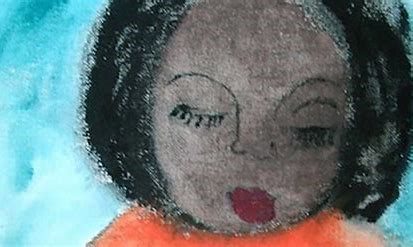“I am not interested in power for power’s sake, but I’m interested in power that is moral, that is right and that is good.” – Martin Luther King, Jr.
How do you define POWER?
Have you ever wanted to use power to change your situation?
Do you have friends in your community who want to make an impact on the world?
Are there action steps you can take to make a change within your own life and community?
People and organizations use different kinds of power to influence others in many ways. When we think of powerful people, we might think of those who are rich and famous, like athletes, politicians, and actors.
We might think of people who are not like us.
In honor and celebration of Black History Month, this blog remembers a courageous Black and Disabled woman, Lois Curtis. Lois used power to make a positive impact on her community and nation.
This is a call to action to remind us that WE have the power to influence others to make worthwhile change in our communities, nation, and world.
Who was Lois Curtis?
Lois Curtis was born in 1967 and was was sent to a psychiatric hospital when she was 12 years old because she had disabilities. The shadows of institutional walls haunted Lois’ life. By the time Lois was in her mid-twenties, she had spent over half her life in places segregated and congregated by disability.
What did Lois want?
Lois wanted to live a meaningful life of her own choosing in the community. Lois DID NOT want to be confined to an institution that didn’t let her make choices or have freedom.
How did Lois use her power?
It’s important to recognize that Lois was her own advocate. Through her actions, she reached out to law experts in her community and found people in power who would support her efforts to become free.
Lois stayed consistent in her efforts. She used her voice to tell people about the horrid living conditions she experienced in an institution.
Lois found community connections to people who were champions of the Independent Living Movement. She educated people on what her rights were.
What do we mean by legitimate power?
People with legitimate power have authority that comes from a position.
· Lois was in legitimate position of power as a person with rights covered under the Americans with Disabilities Act of 1990.
· Lois learned that the isolation of individuals with disabilities is a common form of discrimination
· Lois recruited Sue Jamieson as her attorney to help her understand the ADA further
What do we mean by referent power?
People with referent power are liked and respected.
· Lois was admired by her friends, doctors, and lawyers because she had a gift for making connections.
· Lois was able to talk to people about the truth and about her rights.
· Lois identified allies.
Lois didn’t intend to become a civil rights activist, yet her actions affected the rights of people across the nation.
We must always remember that Lois was a US Citizen who had the fundamental right to file petitions in a court of law. We must never forget that we all OWN this legitimate power.
Lois WON – and paved the way for justice.
· In 1995, she enlisted legal aid so she could be released from the institution.
· She made continuous efforts to influence organizations to comply to the monumental Olmstead Act of 1999.
What was the Olmstead Act of 1999?
The Olmstead Act ruled that the unjustified institutionalization of people with disabilities is discrimination.
In other words, the Olmstead Act said that forcing people with disabilities to live in places that harm them is a form of discrimination.
The decision required states to provide services to people with disabilities in the most integrated settings possible.
Lois continued to advocate for an inclusive society in which people with mental and intellectual disabilities can participate in community-based housing and employment.
Most importantly, Lois lived the life that she chose for herself once she returned to the community. She made a decision to pursue her love for art and explored her passions. She found freedom in making her own friends and building a network that helped others.
What do YOU and Lois Curtis have in common?
“I hope they live long lives and have their own place. I hope they make money. I hope they learn every day. I hope they meet new people, celebrate their birthdays, write letters, clean up, go to friends’ houses and drink coffee. I hope they have a good breakfast every day, call people on the phone, feel safe.” – Lois Curtis – on her hopes for others like her
IMAGE DESCRIPTION and CREDIT:
Title: “Shy Girl,” a 2009 portrait by Ms. Curtis.
Photo: Lois Curtis/Briggs & Associates
Alt text: A Black girl looking down. She wears a vibrant orange dress.
